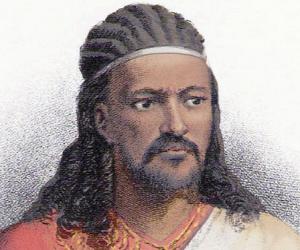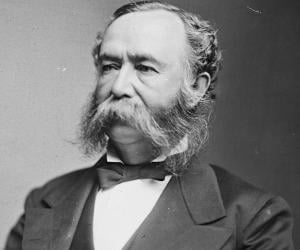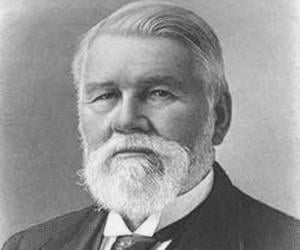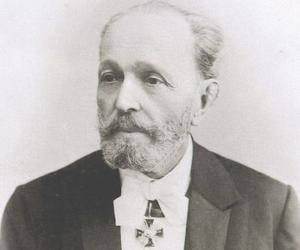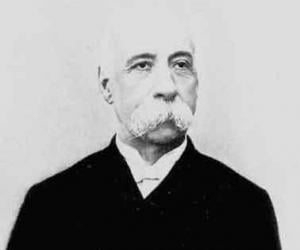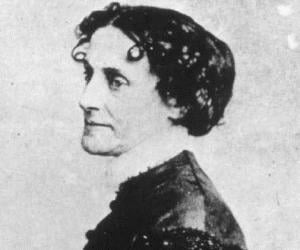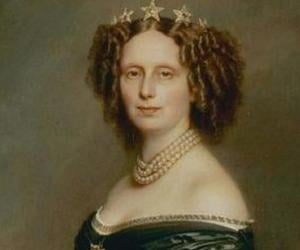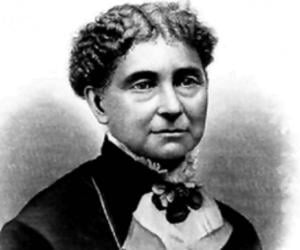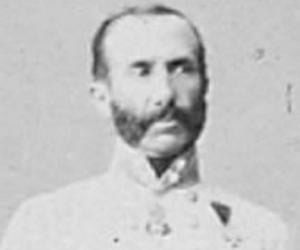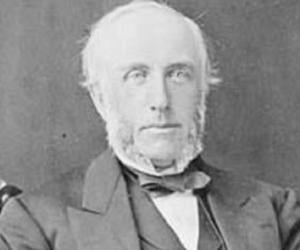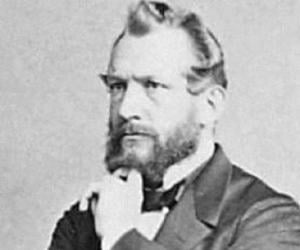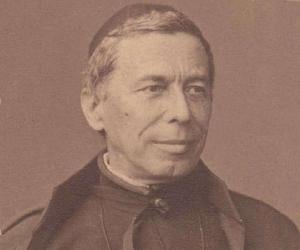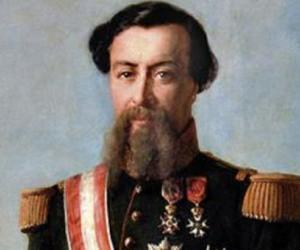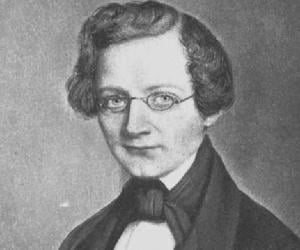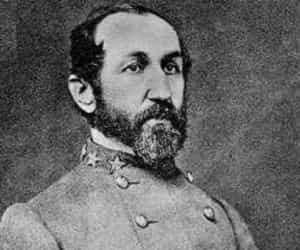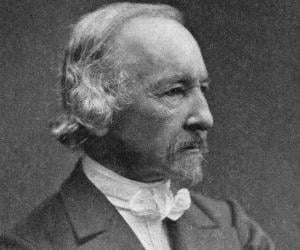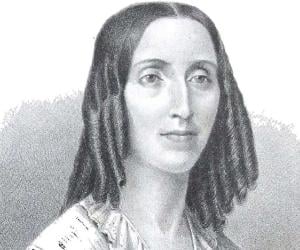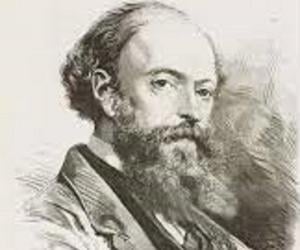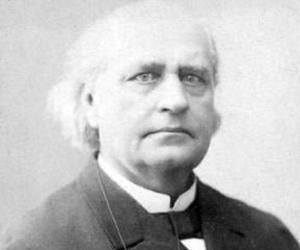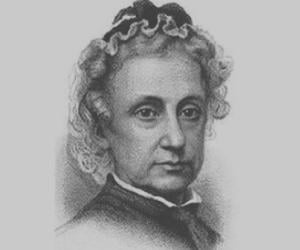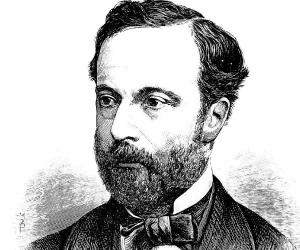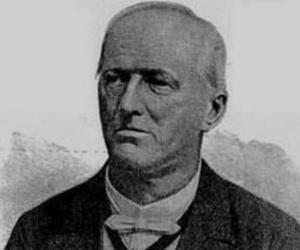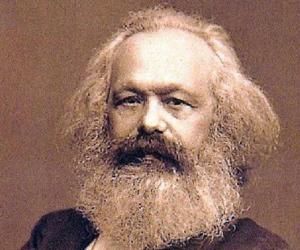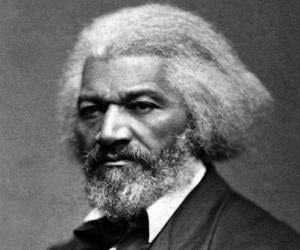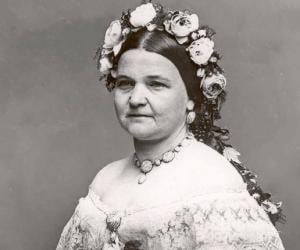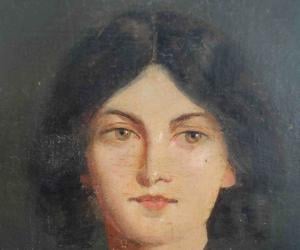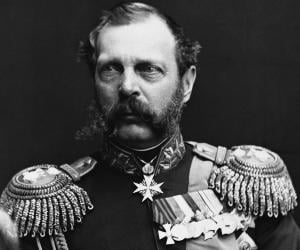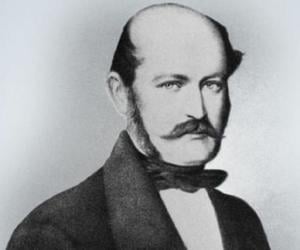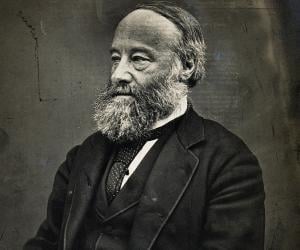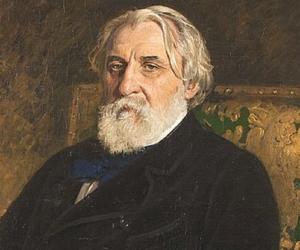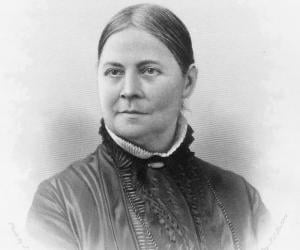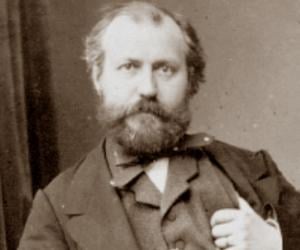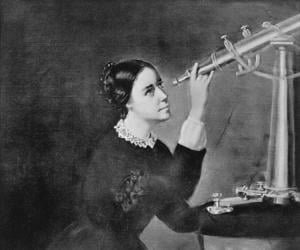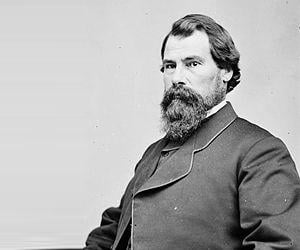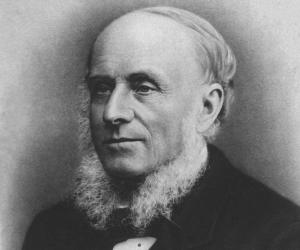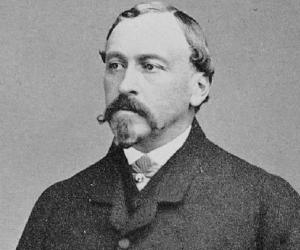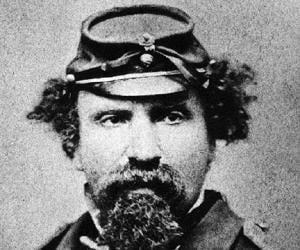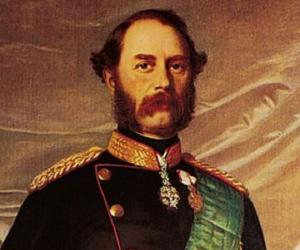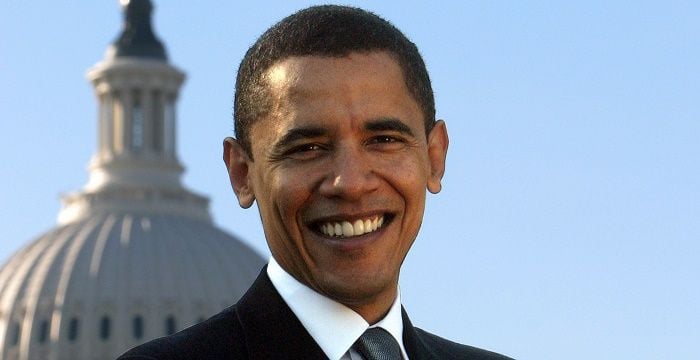Famous People Born In 1818
Discover the most famous people born in 1818. The list includes people like Karl Marx, Frederick Douglass, Emily Brontë, James Prescott Joule, Lucy Stone and many more. This list of celebrities is loosely sorted by popularity. People featured on this list, include military leaders, poets, inventors and civil rights activists born in 1818. This list includes people from United States, United Kingdom, Germany and many more countries.
Vote for Your Favourite Person
Right IconThis ranking is based on an algorithm that combines various factors, including the votes of our users and search trends on the internet.
1
Karl Marx(Philosopher & Economist - Famous for His Theory of 'Marxism' )
Birthdate: 5th May
Sun Sign: Taurus
Birthplace: Trier, Germany
Died: March 14, 1883
Karl Marx, the philosopher, economist, political theorist and socialist revolutionary, is best-known for the 1848 pamphlet, The Communist Manifesto and the three-volume Das Kapital. His theories, called Marxism, maintained that class conflict leads to the development of human societies and that internal tension were inherent in capitalism, which would ultimately be replaced by the socialist mode of production.
Birthdate: 14th February
Sun Sign: Aquarius
Birthplace: Talbot County, Maryland, United States
Died: February 20, 1895
Social reformer and abolitionist, Frederick Douglass was a national leader of the abolitionist movement in Massachusetts and New York. Born into slavery, he had a difficult early life. Eventually, he managed to escape and dedicated the rest of his life to promoting the cause of abolition. He was a great orator and writer.
3
Mary Todd Lincoln(Wife of Former US President Abraham Lincoln and the First Lady of the United States (1861 - 1865))
Birthdate: 13th December
Sun Sign: Sagittarius
Birthplace: Lexington, Kentucky, United States
Died: July 16, 1882
Mary Todd Lincoln was the wife of Abraham Lincoln. She played an important role during the American Civil War as she worked hard to keep the morale of the country high throughout the war. Mary invariably finds a place in stories and biographies written about Abraham Lincoln as she was seated next to him when he was killed.
Birthdate: 30th July
Sun Sign: Leo
Birthplace: Thornton, West Yorkshire
Died: December 19, 1848
Victorian novelist/poet Emily Brontë, also known as Ellis Bell, is best remembered for her iconic novel Wuthering Heights. Her book of poems, written with her sisters Charlotte and Anne, was titled Poems by Currer, Ellis and Acton Bell, highlighting their pseudonyms. She suffered from prolonged illness and died of tuberculosis.
Birthdate: 29th April
Sun Sign: Taurus
Birthplace: Moscow, Russia
Died: March 13, 1881
Alexander II of Russia was the Emperor of Russia, Grand Duke of Finland, and King of Poland from 1855 to 1881. He became known as Alexander the Liberator for his most significant reform, which was the Emancipation Reform of 1861. He is also credited with reorganizing the judicial system, abolishing corporal punishment, and imposing universal military service in Russia.
Birthdate: 1st July
Sun Sign: Cancer
Birthplace: Tabán, Budapest, Hungary
Died: August 13, 1865
Almost 2 decades before germ theory was laid down, Ignaz Semmelweis became the first physician to suggest that hand-washing could prevent the spread of puerperal fever and related deaths. Ironically, after being ridiculed for his theory, he died in a mental asylum, due to an infection from a wound.
Birthdate: 24th December
Sun Sign: Capricorn
Birthplace: Salford, Lancashire, England, UK
Died: October 11, 1889
English physicist, and mathematician, James Prescott Joule primarily worked on the nature of heat, in course of which he established that all forms of energy are fundamentally same and therefore inter-convertible. His findings resulted in the development of the first law of thermodynamics and negation of calorie theory. The SI derived unit of energy, the joule, is named after him.
8
Ivan Turgenev(Novelist, Short Story Writer, Poet & Popularizer of Russian Literature in the West)
Birthdate: 9th November
Sun Sign: Scorpio
Birthplace: Oryol, Russia
Died: September 3, 1883
It is believed Russian novelist Ivan Turgenev was highly inspired by his dominant mother in his younger days and thus created strong female characters in his novels later. He is remembered for popularizing Russian literature and realism in the West. One of his most notable works was Father and Sons.
9
Lucy Stone(American Abolitionist, Suffragist, Orator, and Women's Rights Activist)
Birthdate: 13th August
Sun Sign: Leo
Birthplace: West Brookfield, Massachusetts, U.S.
Died: October 19, 1893
Lucy Stone was an American abolitionist, suffragist, orator, and women's rights activist. She was the first woman to earn a college degree from Massachusetts. Stone played a key role in the formation of the Woman's National Loyal League as well as the American Woman Suffrage Association. In 1986, she was made an inductee of the National Women's Hall of Fame.
10
Tewodros II of Ethiopia
(Emperor of Ethiopia from 1855 to 1868)
Birthdate: 30th November
Birthplace: Qwara, Dembiya
Died: April 13, 1868
Tewodros II of Ethiopia reigned as the Emperor of Ethiopia from 11 February 1855 until his demise on 13 April 1868. An important and influential ruler, Tewodros hold an important place in Ethiopian history. Many plays, books, songs, and art works have been influenced by the life of Tewodros II of Ethiopia.
11
Charles Gounod(French Composer Best Known for His Operas: ‘Faust’ and ‘Roméo et Juliette’)
Birthdate: 17th June
Sun Sign: Gemini
Birthplace: Paris, France
Died: October 18, 1893
Charles Gounod was a French composer. Prolific in his career, he wrote 12 operas and a large number of songs and church music pieces including his Ave Maria and Funeral March of a Marionette. During the Franco-Prussian War, he fled to England, disrupting his career. He later returned to France and regained his position as a respected musical figure.
Birthdate: 1st August
Sun Sign: Leo
Birthplace: Nantucket
Died: June 28, 1889
Maria Mitchell was motivated by her amateur astronomer father to venture into astronomy, and he taught her to operate several astronomical instruments. She later grew up to be America’s first professional female astronomer and is best remembered for discovering the comet 1847 VI, also known as Miss Mitchell's Comet.
13
Wade Hampton III
(General)
Birthdate: 28th March
Sun Sign: Aries
Birthplace: Charleston, South Carolina, United States
Died: April 11, 1902
14
Richard Jordan Gatling
(American Inventor)
Birthdate: 12th September
Sun Sign: Virgo
Birthplace: Hertford County, North Carolina, United States
Died: February 26, 1903
15
Marius Petipa
(One of the Most Influential Ballet Masters and Choreographers in Ballet History)
Birthdate: 11th March
Sun Sign: Pisces
Birthplace: Marseille, France
Died: July 14, 1910
Marius Petipa was a French pedagogue, ballet dancer, and choreographer. He is widely regarded as one of the most influential and important ballet choreographers and masters in ballet history. From 1871 to 1903, he served as the principal choreographer and Ballet Master of the popular Imperial Russian Ballet. In the 1983 biopic Anna Pavlova, Petipa was played by Pyotr Gusev.
16
Don Carlos Buell
(Military personnel)
Birthdate: 23rd March
Sun Sign: Aries
Birthplace: Lowell
Died: November 19, 1898
17
Francesco Crispi
(Prime Minister, Statesman,Lawyer Journalist)
Birthdate: 4th October
Sun Sign: Libra
Birthplace: Ribera, Agrigento, Italy
Died: August 12, 1901
18
Elizabeth Van Lew
(Abolitionist Known for Operating a Spy Ring for ‘Union Army’ During the ‘American Civil War’)
Birthdate: 12th October
Sun Sign: Libra
Birthplace: Richmond, Virginia, United States
Died: September 25, 1900
American abolitionist Elizabeth Van Lew is best-known for developing and running an extensive and efficient spy-ring for Union Army during American Civil War. She was the first person in Richmond who raised the US flag in the city after it fell to US forces in April 1865. She later served as Postmaster General of Richmond and modernized the city's postal-system.
Birthdate: 8th October
Sun Sign: Libra
Birthplace: Sevierville, Tennessee, U.S.
Died: March 6, 1905
20
Sophie of Württemberg
(Queen)
Birthdate: 17th June
Sun Sign: Gemini
Birthplace: Ludwigsburg Residential Palace, Ludwigsburg, Germany
Died: June 3, 1877
Birthdate: 11th June
Sun Sign: Gemini
Birthplace: Aberdeen, Scotland
Died: September 18, 1903
Alexander Bain was a Scottish philosopher. He was a prominent educationalist in the British school of empiricism. A respected figure in the fields of psychology, logic, linguistics, moral philosophy, and education reform, he founded Mind, the first-ever journal of psychology and analytical philosophy. He had an illustrious academic career at the University of Aberdeen.
22
Amelia Bloomer
(American Women's Rights Advocate and Newspaper Editor)
Birthdate: 27th May
Sun Sign: Gemini
Birthplace: Homer, New York, United States
Died: December 30, 1894
Amelia Bloomer was an American temperance and women's rights advocate and newspaper editor. She is best remembered for her association with The Lily and became the first American woman to own and edit a newspaper for women. The famous bloomer costume, which is known as the reform dress, is named after Amelia Bloomer.
23
Archduke Karl Ferdinand of Austria
(Archduke)
Birthdate: 29th July
Sun Sign: Leo
Birthplace: Vienna, Austria
Died: November 20, 1874
Birthdate: 15th October
Sun Sign: Libra
Birthplace: Columbus
Died: May 4, 1885
25
George Brown
(Journalist, Politician and one of the Fathers of Confederation)
Birthdate: 29th November
Sun Sign: Sagittarius
Birthplace: Alloa, Clackmannanshire, Scotland,
Died: May 9, 1880
26
Emil du Bois-Reymond
(German Physiologist and Physician Who Developed Experimental Electrophysiology and Co-Discovering Nerve Action Potential)
Birthdate: 7th November
Sun Sign: Scorpio
Birthplace: Berlin, Germany
Died: December 26, 1896
Emil Heinrich Du Bois-Reymond was a German physiologist and physician. He is credited with developing experimental electrophysiology and co-discovering nerve action potential. He was also a renowned teacher and is known for his association with the University of Berlin where he served as a professor.
27
Angelo Secchi
(Italian Jesuit Priest and Astrophysicist, Who Made the First Survey of the Spectra of Stars)
Birthdate: 28th June
Sun Sign: Cancer
Birthplace: Reggio Emilia, Italy
Died: February 26, 1878
A pioneer in astronomical spectroscopy, Italian Jesuit priest and astronomer Angelo Secchi was among the first scientists who authoritatively stated that the Sun is a star. Notable contributions of Secchi, who served as director of the observatory at the Roman College for nearly three decades, includes discovering three comets and solar spicules; and inventing Secchi disk, heliospectrograph and telespectroscope.
28
Charles III, Prince of Monaco
(Prince)
Birthdate: 8th December
Sun Sign: Sagittarius
Birthplace: Paris, France
Died: September 10, 1889
29
Amalia of Oldenburg
(Queen)
Birthdate: 21st December
Sun Sign: Sagittarius
Birthplace: Oldenburg, Germany
Died: May 20, 1875
30
August Wilhelm von Hofmann
(German Chemist)
Birthdate: 8th April
Sun Sign: Aries
Birthplace: Giessen, Germany
Died: May 5, 1892
31
Prince August of Saxe-Coburg and Gotha
(Prince)
Birthdate: 13th June
Sun Sign: Gemini
Birthplace: Vienna, Austria
Died: July 26, 1881
Birthdate: 21st June
Sun Sign: Gemini
Birthplace: Ehrenburg Palace, Coburg, Germany
Died: August 22, 1893
Ernest II, the eldest son of Duke Ernest I, had been the duke of Saxe-Coburg-Gotha. He was quite close to his brother, Prince Albert, consort to England’s Queen Victoria. Best known for his support of the German unification, he was also a skilled composer of operas and an avid sports lover.
33
Cecil Frances Alexander
(Hymnwriter)
Birthdate: 31st March
Sun Sign: Aries
Birthplace: Dublin, Ireland
Died: October 12, 1895
34
Josiah Gorgas
(Military officer)
Birthdate: 1st July
Sun Sign: Cancer
Birthplace: Elizabethtown, Pennsylvania, United States
Died: May 15, 1883
35
Zachris Topelius
(Finnish Writer, Poet and Historian Best Known for Writing Finnish Historical Novels in Swedish)
Birthdate: 14th January
Sun Sign: Capricorn
Birthplace: Nykarleby, Finland
Died: March 12, 1898
Finnish writer, poet, historian, and journalist Zachris Topelius is best remembered for writing Finnish historical novels in Swedish language, which were later translated into Finnish. His notable works include the fairy tales The Tomten in Åbo Castle and Sampo Lappelill., and the poem Sov du lilla videung. Topelius served as professor and later as rector of the University of Helsinki.
36
Franciscus Donders
(Dutch Ophthalmologist)
Birthdate: 27th May
Sun Sign: Gemini
Birthplace: Tilburg, Netherlands
Died: March 24, 1889
Frans Cornelis Donders was a Dutch ophthalmologist who also served as a professor of physiology at Utrecht University. A respected and internationally acclaimed ophthalmologist, Donders directed the Netherlands Hospital for Eye Patients for many years. Frans Cornelis Donders was also one of the three main founders of scientific ophthalmology along with Hermann Ludwig Ferdinand von Helmholtz and Graefe.
37
Thomas Mayne Reid
(Novelist)
Birthdate: 4th April
Sun Sign: Aries
Birthplace: Ballyroney, Ireland
Died: October 22, 1883
38
Juana Manuela Gorriti
(Writer, Journalist)
Birthdate: 15th June
Sun Sign: Gemini
Birthplace: Rosario de la Frontera, Argentina
Died: November 6, 1892
39
Marco Minghetti
(Prime Minister of Italy from 1873 to 1876)
Birthdate: 18th November
Sun Sign: Scorpio
Birthplace: Bologna, Italy
Died: December 10, 1886
40
Giovanni Strazza
(Sculptor)
Birthdate: 30th November
Birthplace: Milan, Italy
Died: 1875 AD
Giovanni Strazza is perhaps best known for his unique artwork The Veiled Virgin, a stunning and realistic depiction of the Virgin Mary, with a veil draped over her, made of high-quality Carrara marble, derived from Tuscany. The Italian sculptor taught at his alma, Brera Academy in Milan.
41
Charles-Marie-René Leconte de Lisle
(Poet of the Parnassian movement)
Birthdate: 22nd October
Sun Sign: Libra
Birthplace: Saint-Paul, Réunion, France
Died: July 17, 1894
42
Elizabeth Prentiss
(Author)
Birthdate: 26th October
Sun Sign: Scorpio
Birthplace: Portland, Maine, United States
Died: August 13, 1878
Birthdate: 4th February
Sun Sign: Aquarius
Birthplace: London or other parts of England
Died: January 8, 1880
44
Henri Étienne Sainte-Claire Deville
(Chemist)
Birthdate: 11th March
Sun Sign: Pisces
Birthplace: Saint Thomas, U.S. Virgin Islands
Died: July 1, 1881
Born to a French diplomat, Henri Étienne Sainte-Claire Deville initially studied medicine but later deviated to chemistry. He taught chemistry at the Sorbonne and also found a way to produce large-scale metallic aluminium economically through what was known as the Deville process. He also worked extensively on platinum.
45
Elizabeth Keckley
(Author)
Birthdate: 31st January
Sun Sign: Aquarius
Birthplace: Historic Dinwiddie Courthouse, Dinwiddie, Virginia, United States
Died: April 30, 1907
46
Charles Alexander, Grand Duke of Saxe-Weimar-Eisenach
(Prince)
Birthdate: 24th June
Sun Sign: Cancer
Birthplace: Weimar, Germany
Died: January 5, 1901
Birthdate: 8th April
Sun Sign: Aries
Birthplace: Gottorf Castle, Schleswig, Germany
Died: January 29, 1906
Christian IX of Denmark was King of Denmark from 1863 to 1906, having claimed the throne following the death of King Frederick VII. During his early reign, the Danish saw defeat in the Second Schleswig War and lost several duchies. Recovering from a tumultuous start, he reigned over his nation for several years and was respected by his people.
48
Eliza Cook
(Journalist, Poet, Editor)
Birthdate: 24th December
Sun Sign: Capricorn
Birthplace: London Road, Southwark
Died: September 23, 1889
Birthdate: 18th December
Sun Sign: Sagittarius
Birthplace: Horsmonden, England
Died: October 9, 1894
50
Karl Freiherr von Vogelsang
(Journalist)
Birthdate: 3rd September
Sun Sign: Virgo
Birthplace: Legnica, Poland
Died: November 8, 1890
